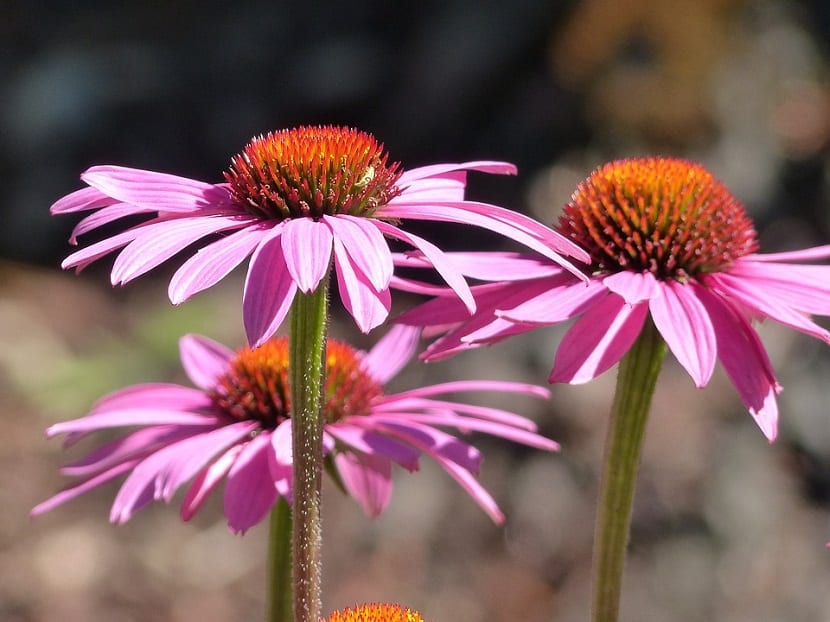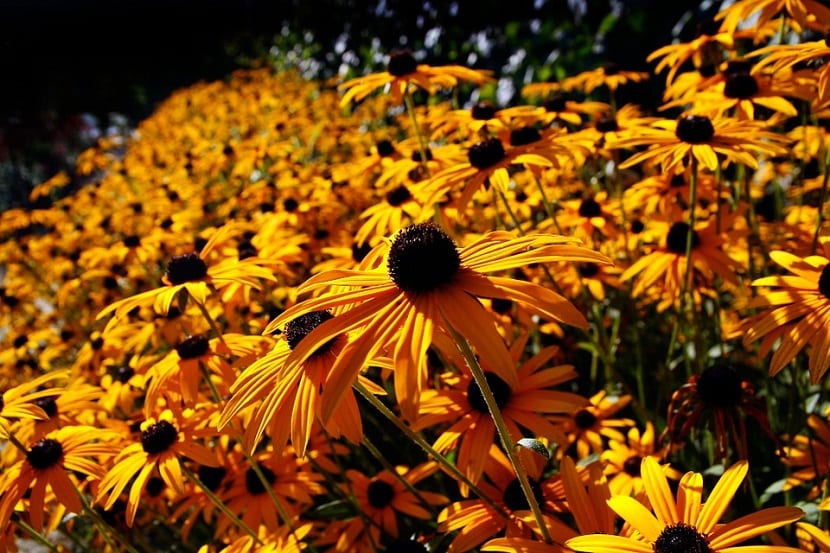
Rudbeckia or Purple Echinacea, commonly called Cone Flower, it is a herbaceous perennial plant, lover of the sun and that stands out for its large and lively flowers, whose lavender and purple petals do not stand flat.
The name of Echinacea comes from the Greek word echinos, which means hedgehog or sea urchin, referring to the spiny central cone found in most of the flowers of the genus. It belongs to the Asteraceae family and is native to open grasslands and forests in the central and southeastern United States, being used by Native Americans to heal wounds and infections.
Characteristics of the Purple Rudbeckia

The common name «coneflower«, Refers to the way the petals are tilted back, away from the center and forming a cone.
The cone-shaped daisy-like flower, is actually made up of several small flowers. The petals are sterile and are there to attract insects to the many fertile flowers that are on the central disk or cone.
These flowers are rich in nectar and they are the favorites of bees and butterflies. The flowers are usually a purple or lavender hue, with a dark central cone.
Foliage growth begins with a group of basal leaves, which finally send out flower stalks in midsummer. The shape of the leaf depends on the variety. Many have oval leaves with a broad base, but some of the dry western areas often have narrow leaves.
The size will vary greatly depending on the variety and growing conditions. Most will be in the wide range of 60 to 120 cm tall.
Growing and caring for Purple Rudbeckia
This plant begins to flower from the beginning to the end of the summer and repeat blooming through frostThey may even take a break after their initial flowering period, but more buds will quickly establish.
They are often shown drought tolerant, but they will do much better with regular water.
Most Rudbeckia grown in gardens prefer a neutral soil pH of about 6.5 to 7.0. and they thrive best in soil that is high in organic matter.
Seed cultivation
Rudbeckia hybrids tend to be sterile, but the species are relatively easy to grow from seed. If you want to save seeds, wait until the cone has completely dried, it will be darker in color and stiff to the touch. The seeds are attached to the sharp spines and you don't need to separate them before storing or planting them.
Different varieties of echinaceae will cross pollinate, that is, if you grow multiple varieties and collect the seed yourself, you can end up with very interesting crosses.

The seeds germinate better with some cold stratification. The easiest way would be to sow them outdoors in the fall and in the ground, or in the winter by sowing in pots.
If you are going to start sowing indoors, simulates the cooling period by immersing the seeds in water and placing them slightly damp in a sealed container in the refrigerator for 8-10 weeks. Then take them out and plant them as you normally would, since they must germinate in a period that goes from 10 to 14 days.
Plants can also be divided or grown from stem cuttings
Pests and diseases of Purple Rudbeckia
As long as the plants have enough space for good air circulation, they should not be bothered by fungal diseases. If you see mold or stains on the leaves, simply cut them off and let them fill in again.
Be on the lookout for aster yellows, a systemic plant disease that causes growth deformities in flowers. There is no known cure and it spreads quickly, so affected plants should be completely removed and destroyed as soon as possible, to protect nearby plants.